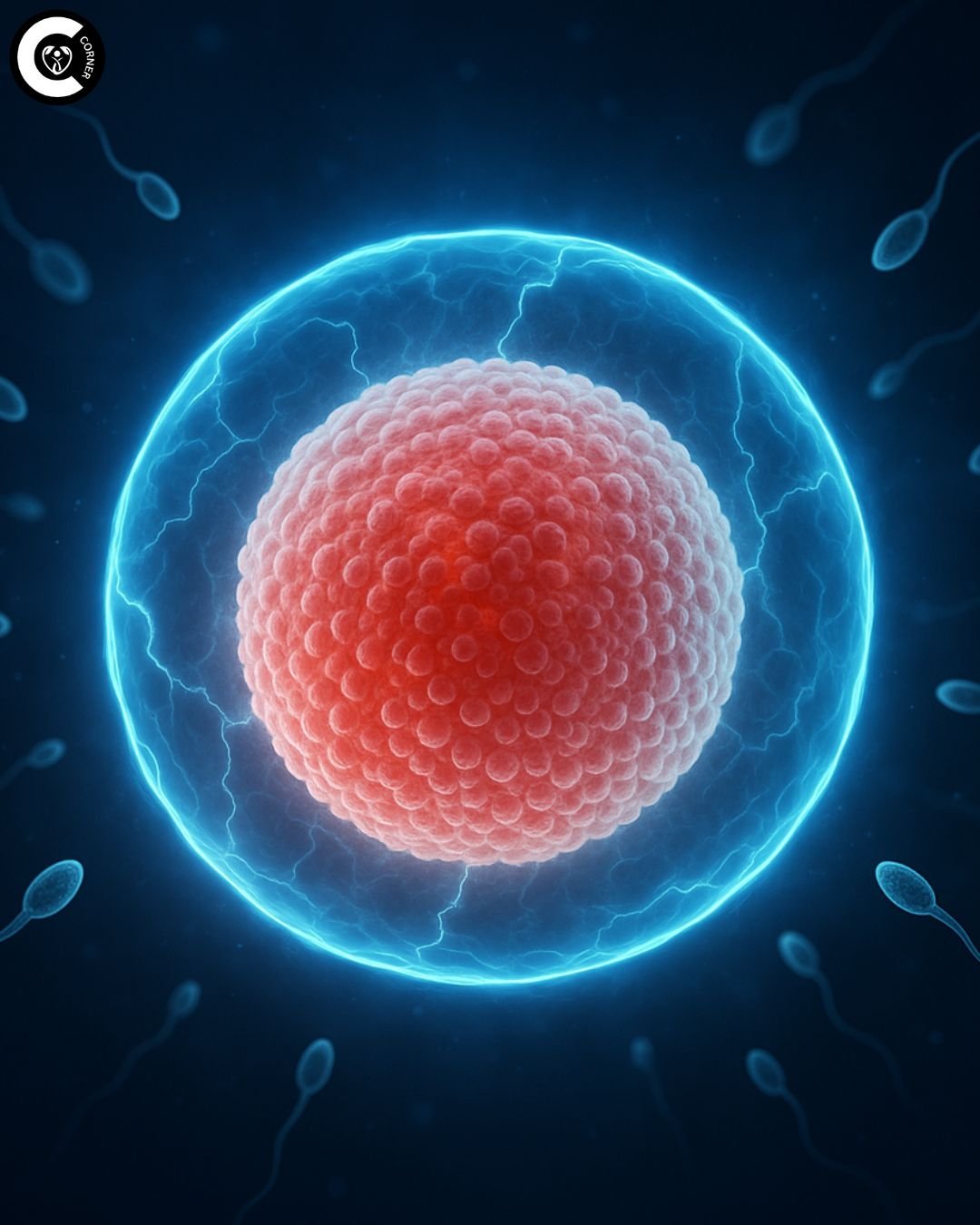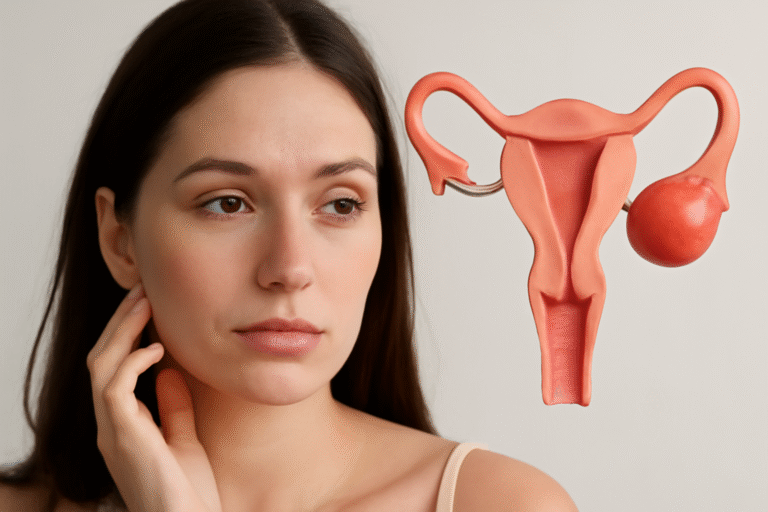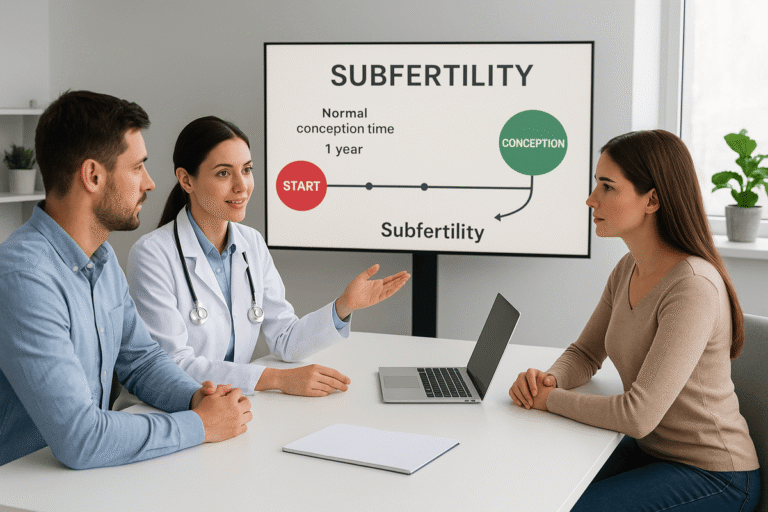The desire to start a family is very personal, but biology makes it a universal truth that egg quality goes down with age, which has a big effect on fertility. Women who are at risk of Advanced Maternal Age (AMA) fertility must take this into account while making decisions about family planning, their emotional health, and their health care. It’s important to know why egg quality goes down over time and what specialists say about it.
This article goes into detail on the science underlying egg quality and a woman’s age, the increasing risk of infertility in women, and useful advice from top reproductive specialists. This information gives you the power to make smart decisions about your reproductive path, whether you’re planning or dealing with infertility.
Why Does Egg Quality Decrease with Age?
The genetic integrity and developmental potential of an oocyte are what make it an egg. Women are born with all the eggs they will ever have, unlike sperm, which are constantly being made. By the time a person reaches adolescence, this reservoir has shrunk to between 300,000 and 500,000. Only 10–15% are still around by age 35, and the quality of the eggs drops quickly.
Chromosomal Instability
Chromosomal mistakes are the main reason why the quality of eggs goes down with age. Older oocytes have a hard time separating chromosomes correctly during meiosis, which is the process of cell division that gets eggs ready for fertilization. This leads to aneuploidy, which is when the number of chromosomes is wrong. This can lead to infertility, miscarriages, or genetic diseases like Down syndrome. According to AMA fertility experts, the rate of aneuploidy in a 25-year-old’s eggs is 20%, but it rises to 80% by age 42.
Mitochondrial Dysfunction
As cells get older, they lose their ability to make energy. Eggs that are older have fewer and less effective mitochondria, which lowers the amount of energy needed for fertilization, embryo development, and implantation. This decline immediately hurts the quality of eggs and the age of women since embryos stop developing or die.
Oxidative Stress: Cumulative Cellular Damage
Free radicals are unstable molecules that come from metabolism and toxins in the environment. They hurt DNA, proteins, and lipids in cells. Eggs that are getting older have fewer antioxidant defences, which causes DNA to break down and the quality of the eggs to drop faster. This harm is worse when people smoke, pollute the air, or are overweight.
Navigating AMA Fertility Risk: When Age Becomes the Dominant Factor
Defining the Advanced Maternal Age (AMA) Threshold
Advanced Maternal Age (AMA) is the age at which women start trying to get pregnant; this is a criterion based on a lot of epidemiological information that shows fertility declines more quickly after age 35. There are definitely differences between women, but population-level statistics show clear trends that every woman should know:
- The chance of getting pregnant naturally drops from about 20% every month at age 30 to only 5% by age 40, which is a fourfold decline in fertility.
- The risk of miscarriages is also alarmingly high, going from 10–15% in the 20s to 35% at age 40 and over 50% beyond age 45, mostly because of chromosomal problems.
- The success rates of IVF using a woman’s own eggs show the biggest drop: the live birth rate drops from 40% per cycle at age 35 to less than 5% by age 43. This shows how important egg quality and female age are.
These numbers aren’t designed to scare you; they’re supposed to give you power through knowledge. Knowing the AMA fertility risk lets you plan your family proactively and get medical help when it’s most effective.
Beyond Egg Quality: The Systemic Impact of Aging
Oocyte quality is the most important factor in AMA fertility risk, but reproductive age affects the whole conception ecology in ways that make things even harder:
- Ovarian Reserve Depletion: In addition to quality difficulties, the number of eggs lost increases around age 35, as shown by indicators like Anti-Müllerian Hormone (AMH) and ultrasound-measured Antral Follicle Count (AFC). This makes fertility treatments less effective.
- Changes in the Uterine Environment: Age affects the endometrial receptivity by decreasing blood flow, increasing fibroid growth, making the endometrial lining thinner, and changing immunological function. All of these things make it harder for even genetically normal embryos to implant.
- Other Health Problems: As people get older, they are more likely to have metabolic disorders like diabetes, high blood pressure, thyroid problems, and autoimmune diseases. These make it harder for women who are dealing with problems with egg quality and age to get pregnant.
What AMA Fertility Experts Urgently Want You to Know
1. Proactive Testing: Your Biological Insurance Policy
All of the top experts agree that early fertility testing gives you information you can’t get anywhere else that is essential for making smart family planning decisions. It is highly suggested that people start getting full tests between the ages of 30 and 32, especially if they are thinking about waiting to have children. Some important tests are:
- AMH Testing: This test checks the ovarian reserve by looking at the levels of Anti-Müllerian Hormone released by growing follicles.
- AFC Ultrasound: Counts the visible antral follicles using transvaginal ultrasound during the early follicular phase of the cycle.
- Hormonal Profiling: Day 3 FSH and estradiol levels show how sensitive the ovaries are, and thyroid and vitamin D testing finds things that can be fixed.
Important Expert: Dr Sarah Berga says, “Waiting until 38 for testing is like checking your bank account after you should have started planning for retirement.” “Low reserve doesn’t mean no chance, but it changes ‘someday’ into ‘strategize now.'”
Also Read: Tips To Enhance AFC Naturally
2. Lifestyle Optimization: Your Toolkit for Personal Influence
Even while chronological aging is unavoidable, factors that can be changed have a big impact on egg quality and the age of women through epigenetic mechanisms:
- Strategic Nutrition: Mediterranean-style meals full of antioxidants, including berries, leafy greens, and almonds, fight oxidative stress. Taking CoQ10 (600 mg/day), vitamin D, and methylated folate specifically helps fix problems that are common in aging oocytes.
- Getting rid of toxins: Smoking directly damages DNA, which speeds up the aging of the ovaries by around ten years. Alcohol messes with hormones that help eggs mature, while endocrine disruptors in plastics and cosmetics act like estrogen mimics.
- Managing Stress Physiology: High levels of cortisol over time mess up the HPO axis signaling, which stops ovulation. Mindfulness, getting enough sleep, and moderate exercise all help to control stress biochemistry at the cellular level.
New studies show that a focused lifestyle change for 6 to 12 months can increase ovarian response markers by up to 30%, even in patients at high risk of infertility.
3. Fertility Preservation: The Exponential Value of Time
Elective oocyte cryopreservation is the best way to stop the quality of eggs from getting worse as women get older, although it relies a lot on when it is done:
- <35 Years: If you’re under 35, 10–15 frozen eggs give you a 70–80% chance of having a live birth.
- 35-37 Years: Needs 15–20 eggs to have the same chance of success because the quality goes down.
- >38 Years: Efficiency reduces a lot—25+ eggs may only have a 30-40% chance of success. Reality Check by an Expert: Dr. Jane Frederick says, “Freezing at 32 instead of 38 can triple your chances of having a biological child in the future.” “Every year of delay means losing biological capital that can’t be replaced.”
4. Advanced ART Strategies for AMA Problems
When dealing with known AMA fertility risks, customized protocols give us ways to move forward:
- PGT-A Screened IVF: Preimplantation Genetic Testing for Aneuploidy finds embryos that are chromosomally normal. This increases the chances of implantation by 60% and lowers the risk of miscarriage by up to 50% for women over 38.
- Donor Egg Integration: Using eggs from younger donors gives a consistent 55%+ live birth rate, no matter how old the receiver is. This is the best way to get around problems with poor egg quality and older women.
- Adjuvant Therapies: For women who don’t respond well to therapy, growth hormone co-treatment may increase egg quality. For women who have trouble getting pregnant, endometrial receptivity testing (ERA) helps them decide when to transfer.
Dispelling Dangerous Myths: Evidence-Based AMA Fertility Realities
Exceptional Health Neutralizes Egg Quality Decline
This widespread misunderstanding gives people a false sense of security.” Good physical health can help with pregnancy outcomes, but it can’t stop the natural decline in egg quality that happens as we get older because of chromosomal aging. Data from fertility clinics around the world show that marathon runners and health enthusiasts have the same ovarian aging path as their counterparts.
IVF Overcomes All Biological Clocks
Modern IVF works wonders, yet it can’t stop the aging of the ovaries. The harsh truth is that live birth rates utilizing a woman’s own eggs drop sharply after age 40 because of the quality of the eggs and the age of the woman, even if she had unlimited money and several cycles. This shows why taking action early is still so important.
In conclusion, turning knowledge into action that gives you power
The first step toward getting back your reproductive freedom in the face of AMA fertility risk is to understand why egg quality goes down with age. There is no denying the basic facts: chromosomal instability, mitochondrial decay, and oxidative damage all work together to make the link between egg quality and female age that affects millions of women. But modern reproductive medicine offers new ways to deal with problems, like advanced diagnostics and the newest preservation and treatment regimens. These make what used to be an unavoidable decline into something that can be dealt with.
The AMA fertility experts are very clear: preemptive assessment before age 35, strategic preservation when possible, and focused therapies when problems crop up can have a huge effect on outcomes. This informed and empowered attitude is what your reproductive future needs. Could you make that appointment, ask for those tests, and look into your alternatives? . Knowledge isn’t just power when it comes to egg quality and female age; it’s also the realization of possibilities.





[…] Also read: Why Egg Quality Declines with Age […]